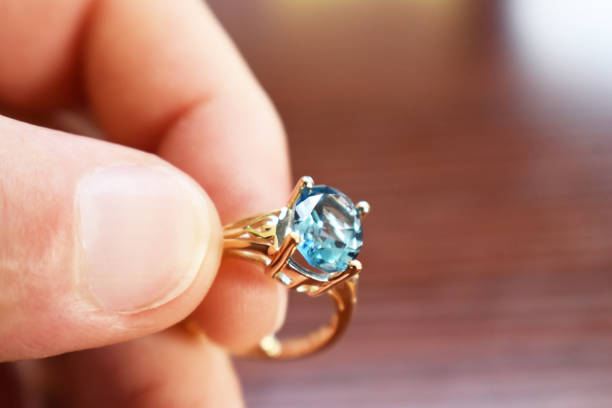While diamonds might be a girl’s best friend, colour gemstones are a close second.
Colour gemstones come in a variety of colours. They can be bright and bold or subtle and subtle with just a hint of colour.
The beauty and wonder of colour gemstones are unmatched. Here’s the scoop on colour gemstones. We offer a comparison of diamonds and colour gemstones and the history of colour gemstones and their origins. Plus, we feature popular Lauren B styles with stunning colour gemstones to inspire you.
Diamonds are made of pure carbon in their solid form. Diamonds are different from other minerals gemstones in that they contain pure carbon in solid form with (generally speaking) less than 0.5% of other elements. However, trace elements can seep into diamonds during formation and affect the diamond’s colours, resulting in fancy-coloured diamonds.
A gemstone’s likeness is determined by its formation process. Mineral crystallization is dependent on temperature, pressure, space and time. The variation in these factors determines the resulting mineral. The colour of the mineral is affected by trace elements. This is how we commonly identify colour gemstones.
Both sapphires as well as rubies, for example, are variations on the mineral corundum. If all corundum is considered the same, then rubies would be called “sapphires.” However, rubies contain trace elements of chromium, putting them in their group of colourful gemstones. This is true for emeralds and morganite as well as aquamarine. However, their hues can vary greatly from one stone to the next.
Natural gemstone creation requires a lot of energy, time, and luck. Because of extensive research and cutting-edge technology, we know more about natural gemstones than ever.
We have so much knowledge today that we can’t even imagine what ancient societies thought of these beautiful gemstones. They were often awed by their beauty and assigned mythical powers and characteristics to each stone based on cultural customs.
Around the turn of the century, different gemstones were assigned each month and their zodiac signs. The rich would collect every gemstone and only wear it in the designated month. This was when it was considered to be of great power.
Birthstones as we know them today originated around the 16th century. The official listing of contemporary birthstones wasn’t made public until 1912 when the National Association of Jewelers assigned gemstones to each month.
Lauren B offers popular colour gemstones
Our clients love colour gemstones, especially sapphire and morganite, as well as ruby, emeralds, aquamarines, and amethyst.
These eye-catching gemstones will please any recipient, whether you’re looking for a unique centre stone for an engagement ring or a piece of sentimental jewellery to gift a friend or loved one.
Sapphire
Sapphires can be any colour of corundum, except for red which is considered a ruby.
Deeply saturated royal blue is the most popular shade of sapphire, as shown on the fingers of both Princess Diana and Kate Middleton. It is believed that sapphires attract abundance and blessings and are associated with royalty.
Morganite is a blush-coloured gemstone that can be found in various colours, including pink, orange-pink and “salmon”. Morganite, also a variety of beryl, has traces of manganese. It’s also a common gemstone with emeralds as well as aquamarine.
Morganite is thought to have a strong connection to the heart and soul. It promotes self-love and heart healing.

Leave a Reply